Posted on August 29th, 2013 by Mary Lord
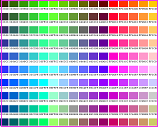 Computer science has the highest pay for new college graduates, twice the national average job growth of more than double the national average, and applications that stretch from rock music to medicine. Yet 9 in 10 schools don’t teach programming. Code.org hopes to change that with a host of free resources to get kids as young as four creating websites and apps.
Computer science has the highest pay for new college graduates, twice the national average job growth of more than double the national average, and applications that stretch from rock music to medicine. Yet 9 in 10 schools don’t teach programming. Code.org hopes to change that with a host of free resources to get kids as young as four creating websites and apps.
The answer is computer programming, and advocates from Microsoft founder Bill Gates to former president Bill Clinton are pushing to include it in the K-12 curriculum.
Far from being complicated algorithms only a geek could master, code writing can be learned by just about anyone — even four-year-olds. Code.org has compiled a host of websites, courses, and other free resources to help students hone programming skills from building websites to creating phone apps. There also are tips for using code writing and programming projects and activities in math or science classes to cover content standards.
Read More
Filed under: For Teachers, Grades 6-8, Grades 6-8, Grades 9-12, Grades 9-12, Grades K-5, Grades K-5, K-12 Outreach Programs, Lesson Plans, Special Features, Web Resources | Comments Off on Code Calling
Tags: code writing, code.org, Computer Programming, Computer Science, Curriculum, Internet Resources, Lesson Plan, Resources for Teachers, STEM education, Teacher Resources, Technology for Learning, Website
Posted on February 13th, 2012 by Mary Lord
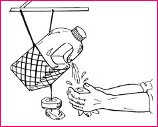 In this service-learning activity, teams of students in grades 10-12 learn the basic principles of fluid dynamics by designing and testing a prototype system to pipe water from a storage tank to a Tippy Tap hand-washing station similar to inexpensive homemade devices used extensively in the developing world.
In this service-learning activity, teams of students in grades 10-12 learn the basic principles of fluid dynamics by designing and testing a prototype system to pipe water from a storage tank to a Tippy Tap hand-washing station similar to inexpensive homemade devices used extensively in the developing world.
Read More
Filed under: Class Activities, Grades 9-12, Grades 9-12, Grades 9-12, Lesson Plans | Comments Off on Lesson: Tippy Tap Hand-Washer
Tags: Agricultural Engineering, Bernoulli, Class Activities, developing nation, energy conservation, Environmental Engineering, fluid dynamics, Grades 9-12, Lesson Plan, pipe systems, pipes, pressure, sanitation, service learning, velocity, Water
Posted on December 18th, 2011 by Mary Lord
 In this activity, students in grades 7-9 explore the sound-dampening capability of materials by designing and prototyping model sound booths. They learn about how sound is reflected and absorbed, and how it travels through various materials, providing an overview of sound dampening propagation in the context of engineering.
In this activity, students in grades 7-9 explore the sound-dampening capability of materials by designing and prototyping model sound booths. They learn about how sound is reflected and absorbed, and how it travels through various materials, providing an overview of sound dampening propagation in the context of engineering.
Read More
Filed under: Class Activities, Grades 6-8, Grades 6-8, Grades 9-12, Grades 9-12, Lesson Plans | 1 Comment »
Tags: acoustical engineering, Class Activities, Electrical Engineering, Grades 6-8, Grades 9-12, Lesson Plan, Music engineering, sound, teachengineering
Posted on December 4th, 2011 by Mary Lord
 In this activity, students in grades 4 – 12 will do math like a computer. They will learn the basics of binary number systems by writing and then counting on their hands, and use their knowledge to decode numbers and letters.
In this activity, students in grades 4 – 12 will do math like a computer. They will learn the basics of binary number systems by writing and then counting on their hands, and use their knowledge to decode numbers and letters.
Read More
Filed under: Class Activities, Grades 6-8, Grades 6-8, Grades 9-12, Grades 9-12, Grades K-5, Grades K-5, Lesson Plans | Comments Off on Lesson: Bits & Binary
Tags: binary number systems, Class Activities, code, Computer Engineering, Computer Programming, Computer Science, digital, Grades 6-8, Grades 9-12, Grades K-5, Lesson Plan
Posted on November 13th, 2011 by Mary Lord
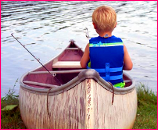 In this activity, teams of students in grades 3-12 explore the engineering design process by building model canoes from everyday materials and testing their design in a basin. The canoes must be able to float for three minutes and, for older students, support a load. Students then evaluate the effectiveness of their canoes and those of other teams, and present their findings to the class.
In this activity, teams of students in grades 3-12 explore the engineering design process by building model canoes from everyday materials and testing their design in a basin. The canoes must be able to float for three minutes and, for older students, support a load. Students then evaluate the effectiveness of their canoes and those of other teams, and present their findings to the class.
Read More
Filed under: Class Activities, Grades 6-8, Grades 6-8, Grades 9-12, Grades 9-12, Grades K-5, Grades K-5, Lesson Plans | Comments Off on Lesson: Can-Do Canoe
Tags: boat, canoe, Class Activities, Design, Lesson Plan, Lesson Plans, Native American
Posted on October 23rd, 2011 by Mary Lord
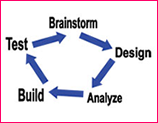 Safer highways. Cool phone apps. Green buildings. Thrilling roller coasters. What do all these things have in common? All bear the stamp of engineering design – a process of brainstorming, building, testing, and refining to create a product, service, or system within time or resource limits.
Safer highways. Cool phone apps. Green buildings. Thrilling roller coasters. What do all these things have in common? All bear the stamp of engineering design – a process of brainstorming, building, testing, and refining to create a product, service, or system within time or resource limits.
Read More
Filed under: Lesson Plans, Special Features | 4 Comments »
Tags: build, Design, Engineering Design, Engineering Design Process, Lesson Plan, Resources for Teachers
Posted on October 9th, 2011 by Mary Lord
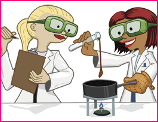 In this hands-on activity designed to teach chemical-engineering principles to freshman engineering students at Rowan University, teams of high school students will melt chocolate and coat commercially available cookies, then perform several measurements and calculations. They then will write a lab report that includes nutritional labeling and recommendations for improving the chocolate-coating process.
In this hands-on activity designed to teach chemical-engineering principles to freshman engineering students at Rowan University, teams of high school students will melt chocolate and coat commercially available cookies, then perform several measurements and calculations. They then will write a lab report that includes nutritional labeling and recommendations for improving the chocolate-coating process.
Read More
Filed under: Grades 9-12, Lesson Plans | Comments Off on Lesson: Guilt-Free Chocolate
Tags: Chemical Engineering, Class Activities, Food Industry, Grades 9-12, Lesson Plan, Project ENGAGE
Posted on September 28th, 2011 by Mary Lord
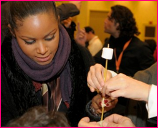 In this lesson, K-12 student teams have a limited period of time (18 minutes) to build the tallest free-standing spaghetti structure that can support a marshmallow. They learn how engineers collaborate to design, test, and improve on their ideas, as well as examine hidden assumptions that can derail the creative process and final product.
In this lesson, K-12 student teams have a limited period of time (18 minutes) to build the tallest free-standing spaghetti structure that can support a marshmallow. They learn how engineers collaborate to design, test, and improve on their ideas, as well as examine hidden assumptions that can derail the creative process and final product.
Read More
Filed under: Grades 6-8, Grades 9-12, Grades K-5, Lesson Plans | 3 Comments »
Tags: Class Activities, Engineering Design Process, Lesson Plan, marshmallow, marshmallow design challenge, spaghetti
Posted on September 25th, 2011 by Mary Lord
 In this lesson, students in grades 6-8 discover how engineers can use biomimicry to enhance their designs. They learn how careful observation of nature — in this case, reverse engineering a flower — can lead to new innovations and products.
In this lesson, students in grades 6-8 discover how engineers can use biomimicry to enhance their designs. They learn how careful observation of nature — in this case, reverse engineering a flower — can lead to new innovations and products.
Read More
Filed under: Class Activities, Grades 6-8, Grades 6-8, Lesson Plans | Comments Off on Lesson: Design From Nature
Tags: Biomimicry, Class Activities, Environmental Engineering, Grades 6-8, Lesson Plan
 Computer science has the highest pay for new college graduates, twice the national average job growth of more than double the national average, and applications that stretch from rock music to medicine. Yet 9 in 10 schools don’t teach programming. Code.org hopes to change that with a host of free resources to get kids as young as four creating websites and apps.
Computer science has the highest pay for new college graduates, twice the national average job growth of more than double the national average, and applications that stretch from rock music to medicine. Yet 9 in 10 schools don’t teach programming. Code.org hopes to change that with a host of free resources to get kids as young as four creating websites and apps.








 In this service-learning activity, teams of students in grades 10-12 learn the basic principles of fluid dynamics by designing and testing a prototype system to pipe water from a storage tank to a Tippy Tap hand-washing station similar to inexpensive homemade devices used extensively in the developing world.
In this service-learning activity, teams of students in grades 10-12 learn the basic principles of fluid dynamics by designing and testing a prototype system to pipe water from a storage tank to a Tippy Tap hand-washing station similar to inexpensive homemade devices used extensively in the developing world. In this activity, students in grades 7-9 explore the sound-dampening capability of materials by designing and prototyping model sound booths. They learn about how sound is reflected and absorbed, and how it travels through various materials, providing an overview of sound dampening propagation in the context of engineering.
In this activity, students in grades 7-9 explore the sound-dampening capability of materials by designing and prototyping model sound booths. They learn about how sound is reflected and absorbed, and how it travels through various materials, providing an overview of sound dampening propagation in the context of engineering. In this activity, students in grades 4 – 12 will do math like a computer. They will learn the basics of binary number systems by writing and then counting on their hands, and use their knowledge to decode numbers and letters.
In this activity, students in grades 4 – 12 will do math like a computer. They will learn the basics of binary number systems by writing and then counting on their hands, and use their knowledge to decode numbers and letters. In this activity, teams of students in grades 3-12 explore the engineering design process by building model canoes from everyday materials and testing their design in a basin. The canoes must be able to float for three minutes and, for older students, support a load. Students then evaluate the effectiveness of their canoes and those of other teams, and present their findings to the class.
In this activity, teams of students in grades 3-12 explore the engineering design process by building model canoes from everyday materials and testing their design in a basin. The canoes must be able to float for three minutes and, for older students, support a load. Students then evaluate the effectiveness of their canoes and those of other teams, and present their findings to the class. Safer highways. Cool phone apps. Green buildings. Thrilling roller coasters. What do all these things have in common? All bear the stamp of engineering design – a process of brainstorming, building, testing, and refining to create a product, service, or system within time or resource limits.
Safer highways. Cool phone apps. Green buildings. Thrilling roller coasters. What do all these things have in common? All bear the stamp of engineering design – a process of brainstorming, building, testing, and refining to create a product, service, or system within time or resource limits. In this hands-on activity designed to teach chemical-engineering principles to freshman engineering students at Rowan University, teams of high school students will melt chocolate and coat commercially available cookies, then perform several measurements and calculations. They then will write a lab report that includes nutritional labeling and recommendations for improving the chocolate-coating process.
In this hands-on activity designed to teach chemical-engineering principles to freshman engineering students at Rowan University, teams of high school students will melt chocolate and coat commercially available cookies, then perform several measurements and calculations. They then will write a lab report that includes nutritional labeling and recommendations for improving the chocolate-coating process. In this lesson, K-12 student teams have a limited period of time (18 minutes) to build the tallest free-standing spaghetti structure that can support a marshmallow. They learn how engineers collaborate to design, test, and improve on their ideas, as well as examine hidden assumptions that can derail the creative process and final product.
In this lesson, K-12 student teams have a limited period of time (18 minutes) to build the tallest free-standing spaghetti structure that can support a marshmallow. They learn how engineers collaborate to design, test, and improve on their ideas, as well as examine hidden assumptions that can derail the creative process and final product. In this lesson, students in grades 6-8 discover how engineers can use biomimicry to enhance their designs. They learn how careful observation of nature — in this case, reverse engineering a flower — can lead to new innovations and products.
In this lesson, students in grades 6-8 discover how engineers can use biomimicry to enhance their designs. They learn how careful observation of nature — in this case, reverse engineering a flower — can lead to new innovations and products.